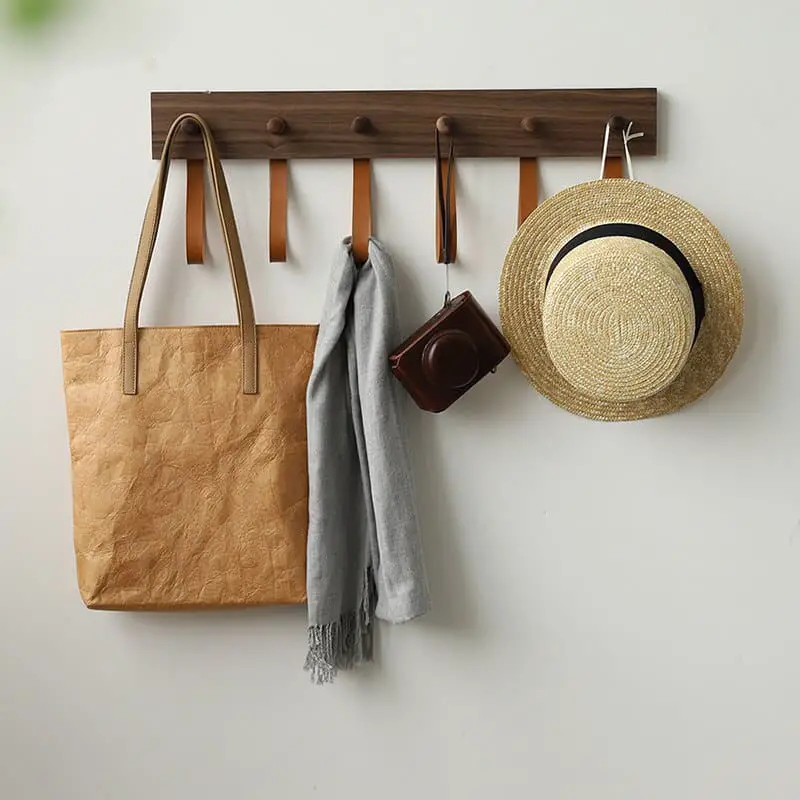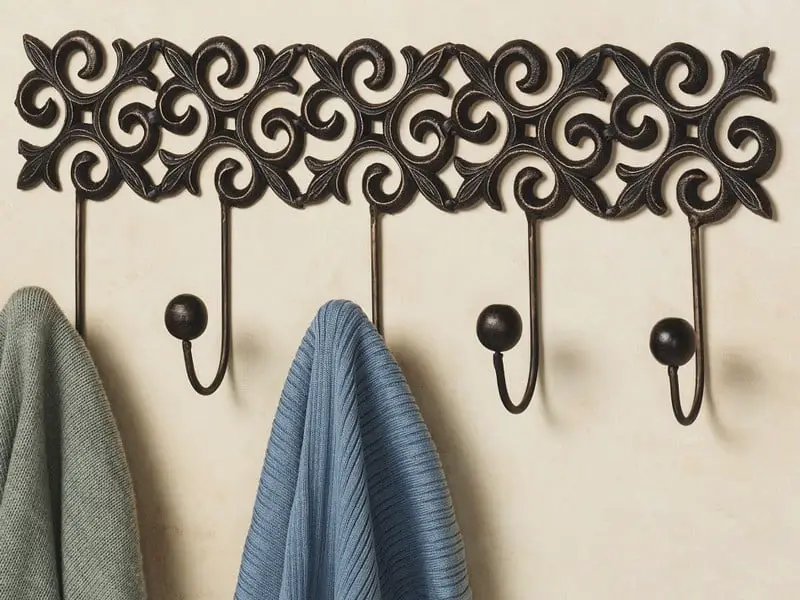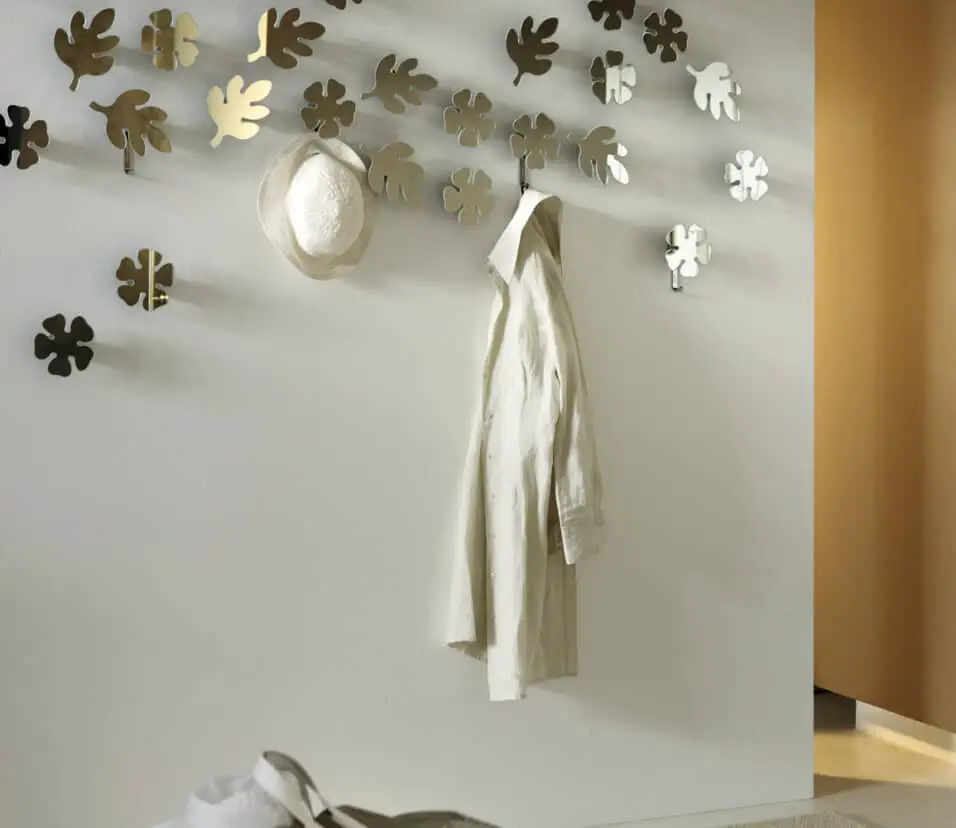How To Remove Adhesive Hooks From Wall Without Damaging Paint
Introduction
How To Remove Adhesive Hooks From Wall Without Damaging Paint: Adhesive hooks are a convenient and versatile solution for hanging items on walls without the need for drilling or hammering. However, when it comes time to remove them, you may be concerned about damaging the paint on your walls. Fortunately, there are several techniques you can use to safely remove adhesive hooks without leaving behind any unsightly marks or residue.
One of the most common methods for removing adhesive hooks is by using heat. This can be done by using a hairdryer or a heat gun on a low setting. Simply aim the heat source at the adhesive hook for a few minutes, allowing the heat to soften the adhesive. Once the adhesive is warmed up, gently pull the hook away from the wall, applying steady pressure. The heat will help loosen the adhesive, making it easier to remove without causing any damage to the paint.
If you don’t have access to a hairdryer or heat gun, another effective method is to use dental floss or fishing line. Start by sliding a piece of dental floss or fishing line behind the adhesive hook, positioning it as close to the wall as possible. Then, using a sawing motion, move the floss or line back and forth while applying gentle pressure. This will gradually separate the adhesive from the wall, allowing you to remove hook without leaving any residue behind. Be sure to keep the floss or line parallel to the wall to avoid scratching the paint
If the adhesive hook is particularly stubborn or if there is a large amount of residue left behind, you can try using rubbing alcohol or adhesive remover. Apply a small amount of rubbing alcohol or adhesive remover to a clean cloth and gently rub it over the adhesive. Allow the solution to sit for a few minutes to dissolve the adhesive, then wipe away the residue with a clean cloth. It’s important to test the rubbing alcohol or adhesive remover on a small, inconspicuous area of the wall first to ensure it doesn’t damage the paint
Remember, it’s always a good idea to read the manufacturer’s instructions before attempting to remove adhesive hooks. Some hooks may have specific removal instructions or recommendations for certain types of walls. By following these instructions and using the appropriate techniques, you can safely remove adhesive hooks from your walls without causing any damage to the paint.

How do you remove glue from plastic hooks on surfaces?
Isopropyl alcohol, also known as rubbing alcohol, works great to dissolve adhesive from stickers, especially on ceramic and plastic surfaces. Just be careful not to rub too hard or use isopropyl alcohol on something very delicate because you might accidently rub off some of the paint.
Introduction:
It can be difficult to remove adhesive from plastic hooks on surfaces, but with the correct tools and methods, it is possible to do it. Whether you want to reuse the hooks or simply clean the surface, there are several methods you can try. In this article, we will explore some of the most effective ways to remove glue from plastic hooks on surfaces.
Method 1: Using Heat:
One of the simplest and most common methods to remove glue from plastic hooks is by using heat. Start by heating the glue with a hairdryer on its highest setting. The heat will soften the glue, making it easier to remove. Once the glue becomes soft, use a plastic scraper or an old credit card to gently scrape off the glue from the surface of the hook. Be careful not to scratch or damage the plastic while scraping.
Method 2: Applying Oil or Lubricant:
If the heat method doesn’t work, you can try using oil or lubricant to remove the glue. Apply a small amount of cooking oil, baby oil, or WD-40 onto a cloth or cotton ball. Rub the oil onto the glue and let it sit for a few minutes. The oil will help break down the adhesive properties of the glue. Afterward, use a clean cloth to wipe away the softened glue. If any remaining adhesive remains, simply repeat the steps above.
Method 3: Using Alcohol or Acetone:
If the glue is particularly stubborn, you can try using alcohol or acetone. Dampen a cloth or cotton ball with rubbing alcohol or nail polish remover containing acetone. Gently rub the cloth onto the glue, allowing the alcohol or acetone to dissolve the adhesive. Be cautious when using acetone, as it can damage certain types of plastic. Test it on a small, inconspicuous area first to ensure it doesn’t cause any harm.
Method 4: Soaking in Warm Soapy Water:
In some cases, soaking the plastic hooks in warm soapy water can help loosen the glue. Fill a basin or sink with warm water and add a few drops of dish soap. Place the hooks in the soapy water and let them soak for about 30 minutes. Afterward, use a soft brush or sponge to scrub away the softened glue. Rinse the hooks with clean water and dry them thoroughly before reusing.
By following these methods, you can effectively remove glue from plastic hooks on surfaces. Remember to always test any chemicals or techniques on a small area first to avoid damaging the plastic. With patience and the right approach, you can restore your plastic hooks to their original condition and reuse them as needed.
What is the strongest adhesive remover?
Best Overall Adhesive Remover—Goo Gone Adhesive Remover. If you need to get rid of sticker residue like tape or glue from hard surfaces like glass, wood, plastics, or porcelain, then go no farther than Goo Gone, the gold standard citrus-based adhesive remover.
glue removers vary in their efficacy based on the glue being removed and the surface it is stuck to. There are several strong adhesive removers available, and the best one for your needs will depend on the specific circumstances. Here are some commonly used and effective adhesive removers:
Acetone: Acetone is a powerful solvent that can effectively remove many types of adhesives, including super glue and some types of tape residue. It’s particularly useful on non-porous surfaces like glass or metal. However, it should be used with caution on plastics, as it can cause damage or discoloration.
Isopropyl Alcohol: Isopropyl alcohol (rubbing alcohol) is another effective adhesive remover, especially for tape residue and certain types of adhesives. It’s generally safe for use on a wide range of surfaces.
Goo Gone: Goo Gone is a commercial adhesive remover that is known for its effectiveness in removing sticky residue from various surfaces. It’s gentle on most materials but still strong enough to break down adhesives.
WD-40: WD-40 is a versatile lubricant and solvent that can be used as an adhesive remover. It can effectively dissolve and loosen sticky substances. However, it should be used sparingly and cleaned off thoroughly after use.
Citrus-based Adhesive Removers: Some adhesive removers are formulated with natural citrus solvents. They are effective at breaking down adhesives and are often less harsh on surfaces
Mineral Spirits: Mineral spirits, also known as white spirit, can be used to remove adhesives like those left behind by tape or stickers. It’s especially useful for cleaning tools or surfaces that may have adhesive residue.
Heat: In some cases, applying heat to the adhesive, such as using a heat gun or a hairdryer, can soften it and make it easier to remove. This method is often used for removing adhesive-backed decals and labels.
Always follow the manufacturer’s instructions and take safety precautions when using adhesive removers. Test the remover on a small, inconspicuous area of the surface first to ensure it won’t cause damage or discoloration. Additionally, make sure the area is well-ventilated, and wear appropriate protective gear, such as gloves and eye protection, if needed.
Does vinegar remove tape?
Try Warm Sudsy Water or Warm Vinegar
Place the warm cloth over the sticky area for about 30 seconds. Gently rub away the adhesive. You can also heat a small amount of distilled white vinegar and follow the same steps. Finish by “rinsing” the area with a clean wet cloth and dry with a soft towel.
Introduction:
Vinegar is a versatile household ingredient that is known for its various cleaning properties. Many people wonder if vinegar can effectively remove tape residue from surfaces. In this article, we will explore the effectiveness of vinegar in removing tape and discuss the best methods to use it for this purpose.
Why vinegar?
Vinegar is a natural and non-toxic substance that can be used as an alternative to harsh chemical cleaners. It contains acetic acid, which gives it its cleaning properties. When it comes to removing tape residue, vinegar can be an excellent choice due to its ability to break down adhesives.
How does vinegar remove tape?
When tape is applied to a surface, it leaves behind a sticky residue that can be challenging to remove. Vinegar works by breaking down the adhesive properties of the tape, making it easier to remove. The acetic acid in vinegar helps dissolve the sticky residue, allowing it to be wiped away more effectively.
Methods to remove tape with vinegar:
There are several methods you can use to remove tape residue using vinegar. One common approach is to create a vinegar solution by mixing equal parts of vinegar and water. You can then apply this solution to the affected area using a cloth or sponge. Allow the solution to sit for a few minutes to allow the vinegar to break down the adhesive. Afterward, gently scrub the area with a soft brush or cloth to remove the residue.
Another method is to soak a cloth or paper towel in undiluted vinegar and place it over the tape residue. Let it sit for a few minutes to allow the vinegar to penetrate the adhesive. Then, use the cloth to wipe away the residue. For stubborn residue, you may need to repeat the process or use a scraper to gently lift off the tape.
Vinegar can be an effective and natural solution for removing tape residue. Its acetic acid content helps break down the adhesive properties of the tape, making it easier to remove. By following the methods mentioned above, you can successfully eliminate tape residue from various surfaces using vinegar.
Does vinegar remove sticky tape?
Distilled White Vinegar
Learning how to remove sticker residue with household items can save you money. Soak a rag or paper towel in vinegar and lay across the sticky area. Let it soak for a few minutes to soften the residue, then wipe or scrape to remove. Plus, you can use vinegar to clean all around the house.
Yes, vinegar can be used to remove sticky tape residue from various surfaces. Vinegar is acidic and can help break down the adhesive properties of the tape. Here’s how you can use vinegar to remove sticky tape residue:
Gather your materials: You will need white vinegar, a clean cloth or sponge, and a little warm water.
Dilute the vinegar (optional): If you want to use a milder solution, you can dilute the vinegar with an equal amount of warm water. This is especially useful for delicate surfaces to avoid any potential damage.
Soak the residue: Dip the cloth or sponge into the vinegar or vinegar-water solution. Then, press it onto the sticky tape residue. Allow it to sit for a few minutes to soak into the residue.
Rub gently: After allowing the vinegar to work for a few minutes, start gently rubbing the residue with the cloth or sponge. Apply a bit of pressure to help lift the adhesive.
Continue rubbing: Keep rubbing in a circular motion until the tape residue begins to loosen and come off.
Wipe clean: Once the residue is removed, use a clean, damp cloth to wipe away any remaining vinegar and residue.
Rinse and dry: If necessary, rinse the surface with clean water to remove any vinegar residue. Then, dry the surface with a clean, dry cloth.
This method is generally safe for a variety of surfaces, including glass, plastic, and metal. However, as always, it’s a good idea to test a small, inconspicuous area first to ensure that the vinegar does not damage or discolor the surface.
Keep in mind that the effectiveness of vinegar may vary depending on the type of adhesive and the surface it’s adhered to. For particularly stubborn or tough adhesive residues, you may need to repeat the process or consider using a specialized adhesive remover.
Does Toothpaste remove adhesive?
Toothpaste is an unlikely solution to get rid of sticky residue, but it works. “Avoid gels and preferably use one with baking soda,” he notes. “You shouldn’t need to let it sit— just apply and wipe away.” Bonus: It’s very safe for most materials and can be used to help remove stains around your home.
Toothpaste can be used to remove some types of adhesive residues, but its effectiveness depends on the type of adhesive and the surface it’s adhered to. Toothpaste is mildly abrasive, and its ingredients can help break down and lift certain adhesives. Here’s how you can use toothpaste to remove adhesive:
Select the right type of toothpaste: Use a non-gel, white toothpaste without any added colors or special ingredients like gels, stripes, or whitening agents. A plain, white toothpaste is less likely to cause damage to surfaces.
Apply a small amount of toothpaste: Squeeze a small amount of toothpaste onto the adhesive residue. You don’t need a lot; a pea-sized amount should be sufficient.
Rub gently: Use a soft cloth, sponge, or your fingers to gently rub the toothpaste onto the adhesive. Apply a little pressure, but be cautious not to scratch or damage the surface.
Continue rubbing: Keep rubbing the toothpaste onto the adhesive in a circular motion. You may need to repeat this process several times.
Wipe clean: Once the adhesive begins to lift or dissolve, use a clean cloth or paper towel to wipe away the toothpaste and adhesive residue.
Rinse and dry: After most of the adhesive is removed, rinse the area with water to remove any remaining toothpaste residue. Dry the surface with a clean cloth.
This method works best for adhesive residues left behind by stickers, labels, or tape on smooth surfaces like glass, plastic, or metal. It may not be as effective on porous surfaces or for certain types of strong adhesives like epoxy.
What are the key steps for safely removing adhesive hooks from a wall without causing damage to the paint?
Removing adhesive hooks from a wall without damaging the paint can be done safely by following these key steps:
Gather Your Supplies:
- Rubbing alcohol or adhesive remover
- Plastic putty knife or an old credit card
- Microfiber or soft cloth
- Warm, soapy water
- Paint touch-up kit (optional)
Prepare the Area:
- Ensure the room is well-lit so you can see what you’re doing.
- Lay down a drop cloth or newspaper to catch any debris.
Peel Off the Hook:
- Gently pull the hook or hanger away from the wall. Start at the top and pull slowly and evenly.
- Avoid jerking or twisting, as this can cause damage.
Remove Any Remaining Adhesive:
- If there’s adhesive residue left on the wall, don’t force it off. Instead, proceed with the next steps.
Use Rubbing Alcohol or Adhesive Remover:
- Dampen a soft cloth with rubbing alcohol or adhesive remover.
- Gently rub the residue in a circular motion. Start at the edges and work your way toward the center.
- Be patient; this may take some time, especially if the adhesive is stubborn.
Scrape Off Residue:
- Use a plastic putty knife or an old credit card to gently scrape off the adhesive. Be very gentle to avoid damaging the paint.
- Hold the tool flat against the wall and scrape in the direction away from the painted surface.
Clean the Wall:
- Wipe the wall with a clean, damp cloth to remove any remaining residue or cleaning solution.
Final Clean-Up:
- Wipe the area with a dry, clean cloth to ensure it’s completely dry.
Inspect for Damage:
- Examine the wall closely to ensure there’s no damage to the paint or wall surface. If there is, you may need to touch up the paint.
Touch-Up Paint (If Necessary):
- If there’s paint damage, use a paint touch-up kit that matches your wall color to carefully cover any blemishes.
- Follow the instructions on the touch-up kit for best results.
Dispose of Materials:
- Properly dispose of any used cloths, adhesive residue, or cleaning materials.
Reapply Hooks (If Desired):
- If you want to rehang items, clean the area thoroughly before applying a new adhesive hook, following the manufacturer’s instructions.How can you effectively separate adhesive hooks from a wall using everyday household items?
How can you effectively separate adhesive hooks from a wall using everyday household items?
You can effectively separate adhesive hooks from a wall using everyday household items. Here’s a step-by-step guide:
Materials Needed:
- Hairdryer
- Dental floss or fishing line
- Rubbing alcohol or adhesive remover
- Plastic putty knife or an old credit card
- Microfiber or soft cloth
- Warm, soapy water
- Paint touch-up kit (optional)
Steps:
Prepare the Area:
- Ensure the room is well-lit, and lay down a drop cloth or newspaper to catch any debris.
Heat the Adhesive:
- Use a hairdryer on the low or medium heat setting to warm the adhesive behind the hook. Hold the dryer about 6 inches away from the hook.
- Move the dryer around, keeping it in motion to distribute heat evenly.
- Heat the area for about 1-2 minutes to soften the adhesive.
Slide Dental Floss or Fishing Line Behind the Hook:
- Once the adhesive is warmed, take a piece of dental floss or fishing line and slide it behind the hook.
- Use a sawing motion to work the floss or line between the adhesive and the wall. This will help to separate the adhesive from the wall without causing damage.
Gently Pull the Hook Away:
- Slowly and evenly pull the hook away from the wall, keeping it close to the surface.
- The dental floss or fishing line will cut through the adhesive, allowing for a smooth separation.
Remove Adhesive Residue:
- If there’s adhesive residue left on the wall, dampen a soft cloth with rubbing alcohol or adhesive remover.
- Gently rub the residue in a circular motion, starting at the edges and working your way toward the center.
- Be patient, as this may take some time.
Scrape Off Residue:
- Use a plastic putty knife or an old credit card to gently scrape off any remaining adhesive. Hold the tool flat against the wall and scrape away from the painted surface.
Clean the Wall:
- Wipe the wall with a clean, damp cloth to remove any remaining residue or cleaning solution.
Final Clean-Up:
- Wipe the area with a dry, clean cloth to ensure it’s completely dry.
Inspect for Damage:
- Examine the wall closely to ensure there’s no damage to the paint or wall surface. If there is, you may need to touch up the paint.
Touch-Up Paint (If Necessary):
- If there’s paint damage, use a paint touch-up kit that matches your wall color to carefully cover any blemishes.
- Follow the instructions on the touch-up kit for best results.
Dispose of Materials:
- Properly dispose of any used cloths, adhesive residue, or cleaning materials.
What precautions should be taken when removing adhesive hooks from walls to prevent paint damage?
Taking precautions when removing adhesive hooks from walls is crucial to prevent paint damage. Here are some key precautions to follow:
Read Manufacturer Instructions: Start by reading and following any instructions provided by the adhesive hook manufacturer. Some hooks may have specific removal instructions.
Gentle Removal: Always be gentle when removing adhesive hooks. Avoid jerking or twisting the hook, as this can damage the paint.
Use Heat (if applicable): If the adhesive on the hook is particularly stubborn, use a hairdryer on low or medium heat to warm the adhesive before removal. This softens the adhesive and makes it easier to peel off.
Use Dental Floss or Fishing Line: Slide dental floss or fishing line behind the hook to cut through the adhesive. This reduces the risk of damaging the paint as compared to using force to pull the hook off.
Avoid Using Tools: Do not use sharp or metal tools, like knives or screwdrivers, to pry the hook off the wall. These can easily damage the paint or the wall surface.
Work Slowly: Take your time during the removal process. Slowly and evenly pull the hook away from the wall. Rushing can increase the risk of paint damage.
Check for Residue: After removing the hook, check the wall for any adhesive residue. If there is residue left behind, do not scrape it forcefully. Instead, use an adhesive remover or rubbing alcohol and a soft cloth to gently dissolve and wipe away the residue.
Protect Surrounding Areas: Use a drop cloth or newspaper to protect the floor and surrounding areas from falling debris or adhesive residue.
Inspect for Paint Damage: Examine the wall closely after removal. If there is any damage to the paint, such as small chips or scuffs, take note of them for potential touch-up later.
Paint Touch-Up (if necessary): If there is noticeable paint damage, use a paint touch-up kit that matches your wall color to carefully cover the blemishes. Follow the instructions on the touch-up kit for the best results.
Dispose of Materials Properly: Dispose of any used cloths, dental floss, or adhesive residue properly. Some adhesives and cleaning materials may require special disposal procedures.

Conclusion
By following these precautions, you can safely remove adhesive hooks from walls without causing damage to the paint or the wall surface. Taking your time and using the right techniques can help preserve the appearance of your walls.
This method uses heat to soften the adhesive and dental floss or fishing line to safely separate the hook from the wall. It’s effective and minimizes the risk of damaging the paint or wall surface.
Remember that patience and gentle handling are key to avoiding damage when removing adhesive hooks. Rushing or using excessive force can result in paint damage, so take your time and follow these steps carefully.
Always test a small, inconspicuous area first to ensure that the toothpaste does not damage or discolor the surface you’re working on. If the adhesive is particularly stubborn or the surface is delicate, consider using a specialized adhesive remover, which is designed for this purpose and is often more effective and less abrasive than toothpaste.
Removing adhesive hooks from a wall without damaging the paint can be a daunting task, but with the right techniques and tools, it is entirely possible. By following the instructions provided, you can successfully remove these hooks and restore your wall to its original condition. Whether you are a renter looking to avoid penalties or a homeowner wanting to maintain the aesthetics of your space, these methods will prove to be invaluable.
One of the key takeaways from these instructions is the importance of patience and caution. Rushing the removal process can lead to unintended consequences such as paint chipping or wall damage. By taking your time and following each step carefully, you can minimize the risk of any mishaps. Additionally, it is crucial to use the right tools for the job. The instructions highlight the use of a hairdryer, dental floss, and rubbing alcohol, which are all readily available and affordable options.
Another significant aspect to consider is the effectiveness of the techniques outlined. The instructions provide a comprehensive approach that has been proven to work effectively in removing adhesive hooks without causing any harm to the paint. This is particularly important for individuals who are concerned about the appearance of their walls. By utilizing these methods, you can confidently remove the hooks and enjoy a clean, undamaged surface.
Furthermore, these instructions emphasize the importance of proper preparation and aftercare. Preparing the area before removal, such as heating the adhesive with a hairdryer, ensures that the hooks come off easily. After removal, using rubbing alcohol to clean any residue left behind helps to maintain the integrity of the paint. These additional steps contribute to the overall success of the process and ensure that your wall remains in pristine condition.
Removing adhesive hooks from a wall without damaging the paint is achievable by following the instructions provided. With patience, caution, and the right tools, you can successfully remove these hooks and restore your wall to its original state. The effectiveness of the techniques outlined, along with the emphasis on preparation and aftercare, make this a reliable and trustworthy method. By implementing these steps, you can confidently remove adhesive hooks and enjoy a clean, undamaged wall surface.








